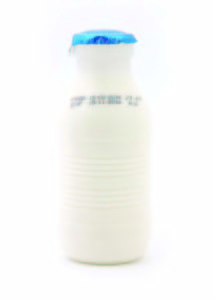Trending
Best-Be•fore (adj.): A look at deciphering best-before dates
April, 2017

It happens more often than we would like to admit: that moment when you finally find the lost yogourt at the back of the fridge, only to discover that it’s long past its best-before date. The only available option is to toss it, right? Well, after reading more about best-before dates, you might think twice. To help you decide, here’s a compact tour of the world of best-before dates—their definition, history and how they compare to other food-product-dating terminology.
Best-Before Dates in a Nutshell
Best-before dates are safeguards that measure the quality of packaged foods and state a time frame for a food item’s optimal freshness and nutritional value when stored under the right conditions. Contrary to common perceptions, it is the flavour and texture of a food item that is affected after the best-before date, not its edibility. That is, many foods are still safe to eat after their best-before dates pass. In Canada, best-before dates are required on food items that will keep fresh for 90 days or fewer. They are not, however, required on pre-packaged fruits and vegetables.
The History of Best-Before Dates
Best-before dates have a relatively short history. One of the first recorded uses of a clearly marked or ‘open dating’ system occurred in the storerooms of Marks & Spencer during the 1930s and was used to help employees with stock rotation. Prior to this, retailers relied only on the encrypted or ‘closed dating’ system that was printed on food packaging by manufacturers.
The clear labelling of the ‘open dating’ system became popular with consumers throughout the 1970s, especially since urban populations were growing and more people had little-to-no knowledge about where and when their food was produced. As a result, many supermarkets and food retailers voluntarily adopted ‘open’ food labelling. By 1973, 10 states had issued legislation requiring ‘open dating’ for food products, and though congressional hearings were held, legislation has never been implemented at a federal level in the United States (except for expiration dates concerning infant formula and nutrition).
Today, Canada has federally mandated best-before dates under the Food and Drug Regulations for many food items; however, most manufacturers and retailers are responsible for determining the safety and time of their best-before dates.
Other Common Food Labelling Terminology
Expiry Date/Use By: These dates indicate the date by which a food item should be used or consumed before it becomes a food safety risk. Once the expiry date has passed, the food item generally becomes unsafe to use and should be thrown away. In Canada, only five food products are required to have expiry dates: formulated liquid diets, food products for use in very low-energy diets, meal replacements, nutritional supplements and infant formula or other human-milk substitutes.
Sell By: This date is for retailer use and indicates the date by which a product should be sold by unless it is frozen. Typically, one-third of a food product’s duration still remains after the sell-by date.
Manufactured On: Instead of a best-before date, some food products have a manufactured-on date, which indicates when the food item was produced. These dates can help in determining the shelf life of a food product and are especially practical for canned goods.
When Best Comes to Worst
Although common sense and an “if it smells, looks and tastes bad; it’s probably bad” approach do work, they’re not foolproof. Some bacterial pathogens cannot be detected by the senses. That’s why fresh meats and opened dairy products should be treated with extra caution. Also, watch out for cracked eggs and bulging or leaking cans, which should be automatically thrown away.
According to Dr. Gary Sandberg, program head of Food Technology from BCIT, some foods you may also want to watch out for after the best-before date, though they are still edible, are acidic products such as ketchups and salsas. Though they are still edible, they tend to taste more sour or bitter over time. Unopened cheese may develop stronger flavours as well, but the key word here is unopened. t8n
Not Egg-actly Science
To test if your eggs are still good to eat, try floating them in water. Older eggs will dry out and float (due to air entering through tiny, microscopic holes in the shell). If they sink, the eggs are still fresh and good to use.
Did You Know?
Here is a list of common food products and their typical viability after their best-before dates:
Butter: 4 weeks, opened or unopened
Milk: 7 days, unopened
Yogurt: 7 to 10 days, opened or unopened
Deli Meats: 3 days, unopened
Fresh Meats: 2 days, unopened
Fresh Ground Meat: 1 to 2 days, unopened
Fresh Shellfish: 12 to 24 hours
Leftover soups and stews: 3 to 4 days












